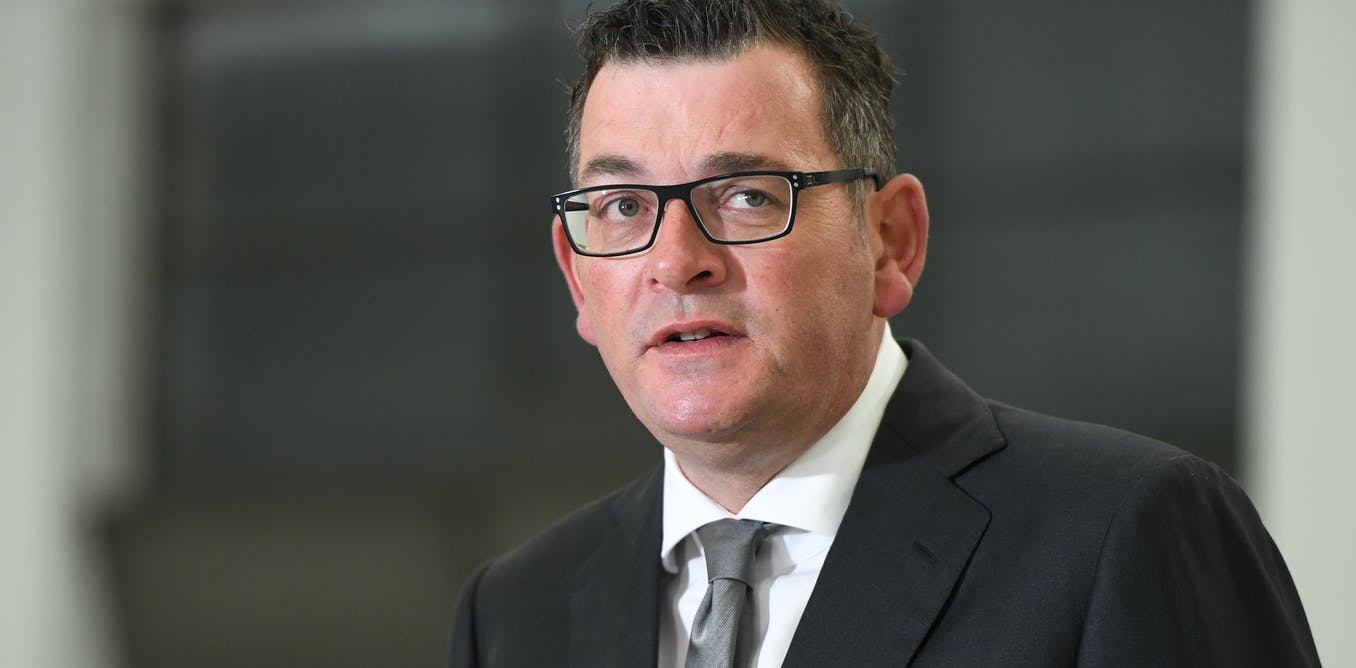What’s a T7 vertebra and what happens when you injure it? 2 experts explain

Victorian Premier Daniel Andrews was injured on Tuesday after slipping and falling on wet stairs at a holiday home on the Mornington Peninsula.
Reports indicate he broke some ribs and fractured his T7 vertebra, and is now receiving treatment at the Alfred Hospital’s trauma centre in Melbourne.
Let’s take a look at what an injury to the T7 vertebra actually means.
The spine
Injuries to the spine can be particularly debilitating because the spine acts as the central pillar on which we stand.
It also protects some of the vital structures in our bodies such as the nerves, blood vessels and spinal cord. These nerves transport impulses from our brains to the muscles, and feed information back to the brain from our limbs. So certain spinal injuries can potentially be very dangerous if they interfere with these functions.
Though we might not think of the spine as readily as we do heart disease or other conditions as reasons for illness, it represents a considerable burden of disease for the Australian health system.
The spine is often describe as consisting of five main areas.
Shutterstock
About four million Australians, or one in six, suffer from back problems. Many of these are related to the bones that make up the spine.
Each of the individual bones in this region are called “vertebra”. Your vertebral column (or spine) is composed of five main areas: the cervical spine (neck), the thoracic spine (where your ribs attach), the lumbar spine, and finally the sacrum and coccyx.
There are seven cervical vertebrae (C1-C7), 12 thoracic vertebrae (T1-T12), and five lumbar vertebrae (L1-L5). The area Andrews has injured, the thoracic spine, forms a semi-rigid cage due to its attachment to the ribs. These attachments mean this region of the spine is much stiffer and less flexible than the other areas.
The fracture seen in Andrews’ case appears to involve the seventh thoracic vertebra (T7), which is roughly halfway down the back. As this bone also has a pair of ribs attached, it is not a surprise his reported injuries also include broken ribs.
Vertebral fractures and the road to recovery
Fractures (breaks) of the bones in our spine become more likely as we age, and are more common in women over 60, whose bones may be weaker as a result of osteoporosis.
In younger patients, spinal fractures are much more likely to be the result of an accident. This is often a car accident, or a high-energy fall such as falling down the stairs. In this group, males are significantly more likely to be injured.
Read more:
Victorian emergency departments during COVID-19: overall presentations down but assault, DIY injuries up
In general, a patient with a fractured T7 would experience pain when moving, and have difficulty standing for long periods. Patients with associated rib fractures may sometimes even have pain with breathing (particularly when taking big breaths).
If there’s no associated spinal cord injury or damage to the nerves in the area, a full recovery is likely, but this can take weeks or months. This process often involves rehabilitation with physiotherapists and other health-care providers.
We’re not familiar with the details of Andrews’ case. But his medical team has likely performed a series of scans and assessments to ascertain the full extent of any damage, and to decide on the most appropriate course of treatment.

Recovery from a spinal injury can take time.
Shutterstock
Falls are common
On average, nearly 220,000 Australians are hospitalised each year due to falls (that’s more than 600 people a day).
Falls serious enough to take you to hospital are becoming more common in Australia. National data suggest hospital presentations due to falls are increasing by nearly 2% each year. In some specific groups, such as males over 65, the increase in the rate of falls is even higher (3%).
Read more:
Needless treatments: spinal fusion surgery for lower back pain is costly and there’s little evidence it’ll work
In 2016-17, 41% of hospital admissions for injuries were a result of falls. Falls from, or on, stairs account for 7% of these.
Andrews has clearly suffered a serious injury, which can be very painful. We wish him a speedy recovery.

The authors do not work for, consult, own shares in or receive funding from any company or organization that would benefit from this article, and have disclosed no relevant affiliations beyond their academic appointment.







